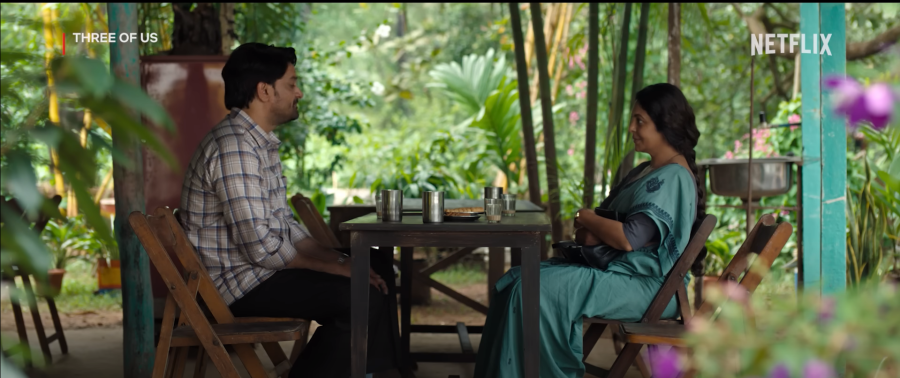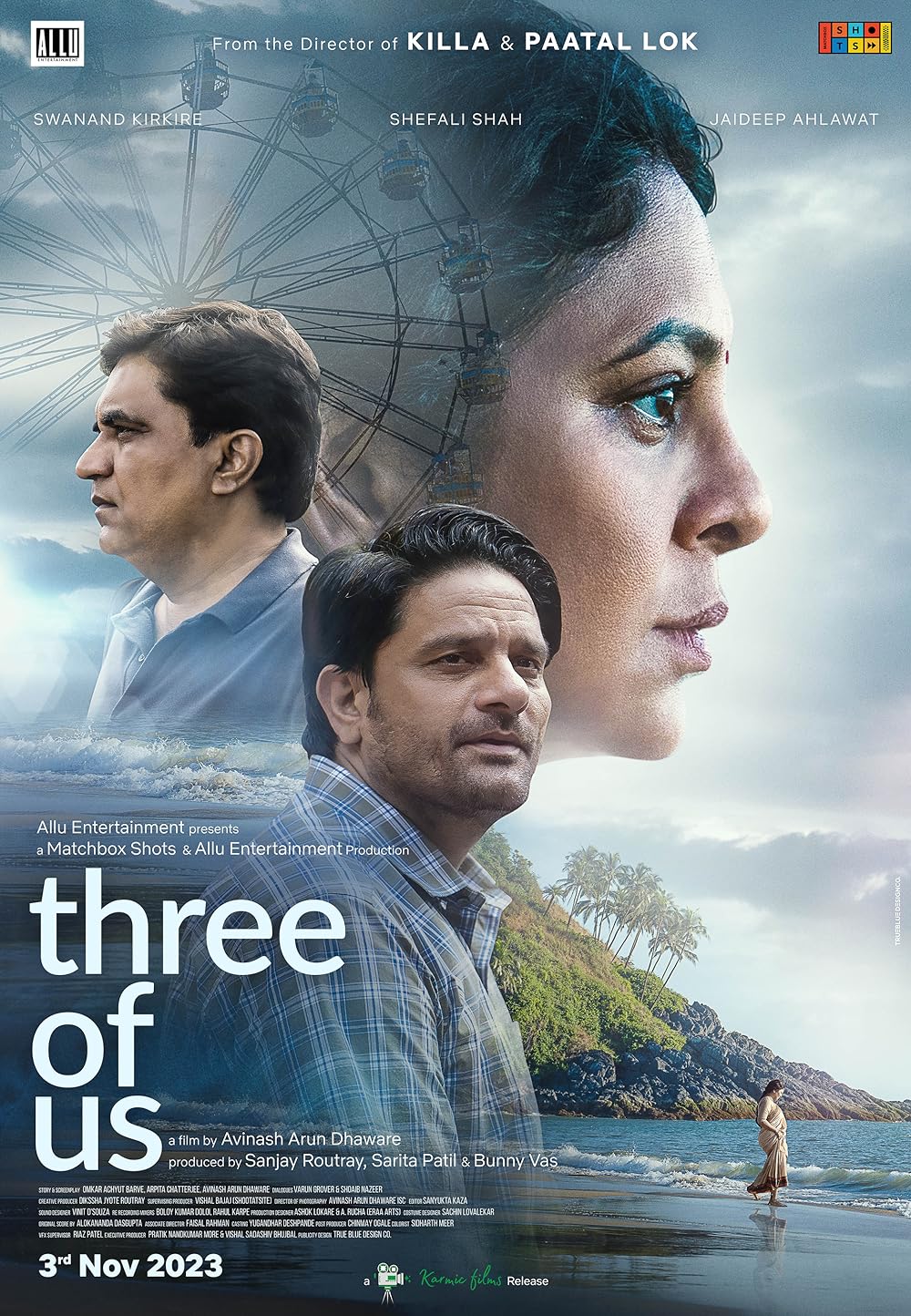Movies
The intuitive empathy of ‘Three of Us’
In an industry that emphasises sensationalism, the film’s subtlety is a breath of fresh air.
Anusha Dhakal
On a weathered park bench, Shailaja (played by Shefali Shah), a middle-aged woman, appears lost in reverie, her vacant gaze fixed on the space before her. As she sits on the park bench, an elderly woman who appears to be her neighbour, whom she does not recognise, mentions that she has left jars of pickles at her house.
In this seemingly perfect moment in the film, Shailaja, in the early stages of dementia, and the elderly woman is in stark juxtaposition. Shailaja's memory is fading as a middle-aged woman, while the elderly woman remembers more than she does.
One rarely contemplates the futility of memory when all the sound mind does is replay, dissect, and retain it. As Shailaja becomes more aware of her waning memory, she resolves to revisit and confront her childhood one last time.
Reminiscent of Celine Song’s film ‘Past Lives’, this film explores the dynamics of childhood lovers reuniting. This is delicate ground to tread, as much could go wrong. Instead of dramatising the interactions between reuniting lovers (who also happen to be married and have separate lives), both films handle the subject with nuance and maturity, which makes viewers engage with the subject more realistically.
In both films, mixed emotions signify maturity, as contradictions tame each other. Loving and letting go walk hand in hand, ripening the film into emotionally rich and intuitively empathetic experiences. While many films, as of late, focus on sensational themes like murder and disturbing content to evoke thoughts in viewers, it is rare to find films that achieve the same by navigating subtle emotions with understanding and maturity.
In the film, revisiting childhood is like peering into a miniature time capsule. As Shailaja, Pradeep (her childhood love, played by Jaideep Ahlawat), and their childhood friend visit their old school, they find the classroom much smaller than they remembered.
Familiar sites and relics of their childhood become emotional waypoints in the film. As they reflect on how everything seemed larger as children and how their perspective has shifted with age, the feelings, emotions, and memories they experience and revisit weave together like a map.
This re-exploration of her childhood town becomes a way for Shailaja to recount and fondly remember her past. As the film progresses, Shailaja rediscovers childlike wonder, contrasting the mundane realities of adulthood depicted in the earlier scenes of her workplace. Her journey with dementia gives her a unique vantage point, where all the moments of joy she encounters are shaped by fond memories of childhood.
However, though her dementia gives her a unique perspective, it also disarms her. In a scene where she revisits her childhood at her old Kathak school and performs the dance as she remembers, there is a moment in the end when she forgets some of her steps and hides behind a pillar.
Although Shailaja is aware of her illness, at this moment, she is compelled to acknowledge that her memory is transient.
The characters' gazes, seemingly inconsequential conversations, and the unfolding dynamics of their interactions, enraptures the audience to discern the nuances of human connections. The interaction between Shailaja and Pradeep's spouses is also genuine; there is a subtle undertone of jealousy, but it is depicted maturely rather than in an exaggerated manner.
Avinash Arun approaches this film with unequivocal empathy for all the characters. Shailaja’s husband, Dipankar, finds himself in a delicate situation as Shailaja appears happier with her childhood lover, Pradeep. Conflict arises when Dipankar confronts her, asking if she was ever happy with him during their long marriage. This moment is gentle, yet powerful. Similarly, Pradeep’s wife, Sarika, initially feels a tinge of jealousy, but this jealousy is handled with grace, both by Sarika and the film.
The cinematography also enhances the atmosphere of the film, staying true to its portrayal of a woman with dementia who grapples with fading memories. The film features numerous static shots with sparse dialogue, emphasising its visual composition.
Arun, who doubles as director and cinematographer, employs beautiful blueish colour palettes and effectively uses shadows to symbolise the progression of the characters’ emotional journeys.
‘Three of Us’ is as much about holding on as it is about letting go. Towards the end of the film, when Pradeep and Shailaja are on a Ferris wheel, Shailaja says something that represents the message of the film: “ I needed to reach here, so I did. Our life is always spent in this dilemma—do we choose a busy life or a peaceful one? Only recently, life told me to slow down, and so I did.”
‘Three of Us’ is a truly special film made for the sake of art and crafted in a way that recognises and understands normal people and difficult circumstances with incredible empathy. This film provides closure not just for estranged lovers like Shailajas and Pradeeps but also for viewers. It shows the audience that there is great strength in embracing life's ephemerality.
Memories are fleeting, and our lives seem to move at an incredible pace, so much so that we sometimes feel as if we’re being left behind. In this rat race, Bhagdaud ‘Three of Us’ reminds viewers to slow down and take it all in, as it is the only way one can give life form.
Three of Us

Director: Avinash Arun
Starring: Shefali Shah, Jaideep Ahlawat, Swanand Kirkire, Kadambari Kadam
Duration: 1h 39m
Language: Hindi
Available on Netflix




 22.65°C Kathmandu
22.65°C Kathmandu












